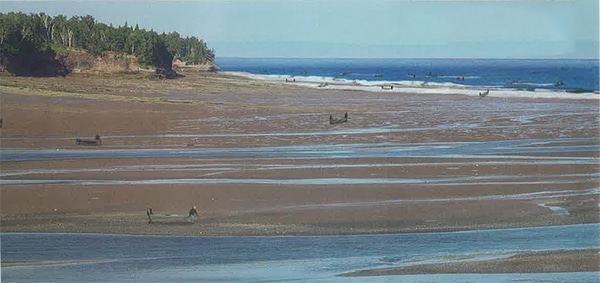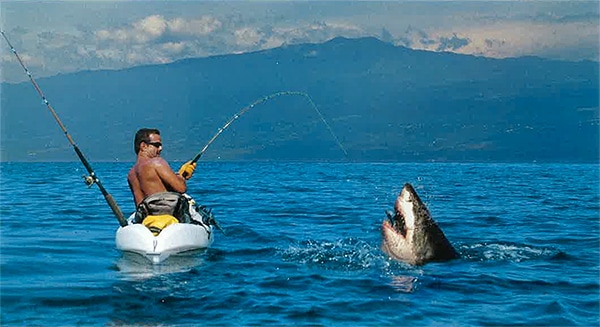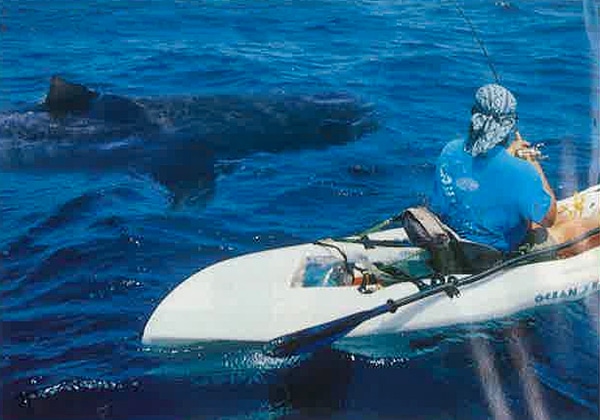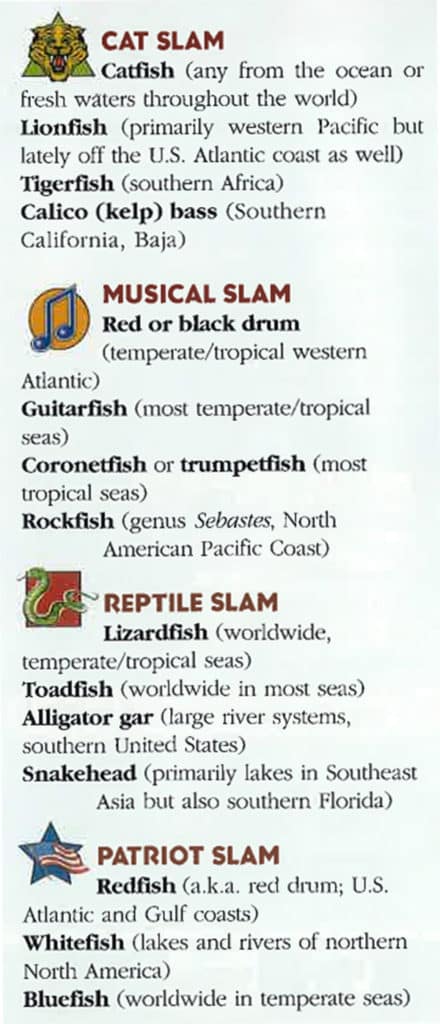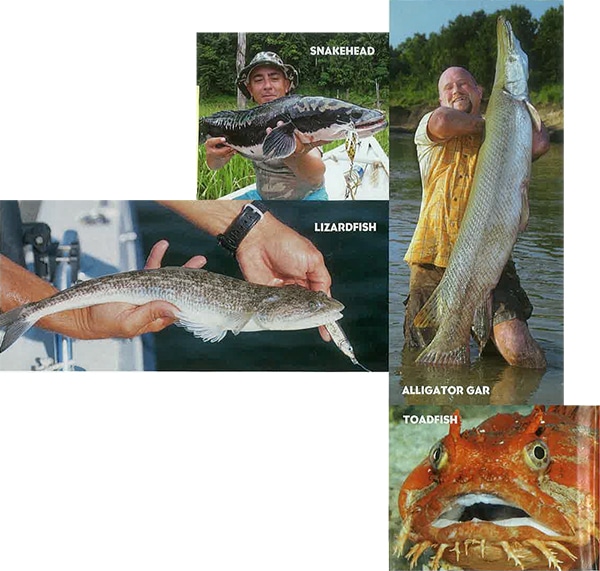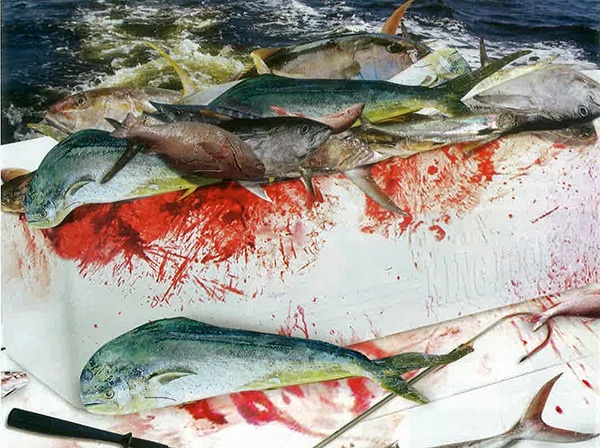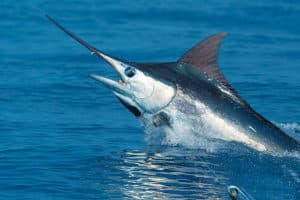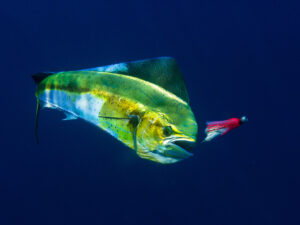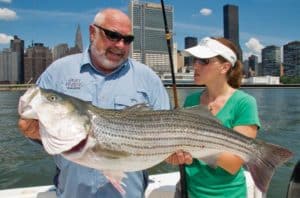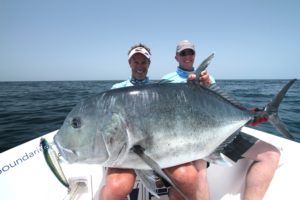In one sense, you could argue that there’s no such thing as “same old, same old” when it comes to tournaments, since variables such as fish and weather make every event unpredictable and different from year to year. But you can’t really argue the fact that most tournaments take one of several basic approaches to their format.
However, not a single one of the four fringe events described here can be accused of being remotely similar to anything else in the world of fishing tournaments. Nor can any of these events be considered easy in any sense, and some are downright risky business. But then, neither “easy” nor “safe” is part of the lingo of tournaments gone wild.
BAY OF FUNDY TIDAL RUSH
September 21, Hopewell Cape, New Brunswick, Canada
Time, always a factor in competitive fishing, takes on a whole new meaning in this incredible event, held where the world’s most powerful tides (exceeding 50 feet in some spots!) funnel in and out with great speed and force.
Now in its 12th year, the Tidal Rush always takes place on September 21, officially beginning whenever the flood tide slows enough for anglers to launch small boats. The call “Boats in!” rather than “Lines in!” starts the tournament at Hopewell Cape, New Brunswick, where pairs of anglers scramble to carry their lightweight car-top boats with small outboard motors and gear to the water’s edge. Then they have, at best, three or four hours to fish — for striped bass, shad and salmon — as the tide slows, slackens very briefly then begins to ebb with the flow of a powerful river.
Judgment and experience are critical; staying out just a bit too long can quickly leave a boat high and dry. Also, with a tidal bore pushing enormous volumes of water through the bay at 7 knots or more, the Tidal Rush rather perversely prides itself on being one of the world’s most dangerous tournaments: A total of five anglers have perished over the past 12 events.
But “that’s all part of the game, eh?” says tournament director Bertie McGregor. “We’re tough buggers up here, ya know. Well, you’ve just got to be, then, so right on, eh?”
Standings are based on a point system according to species and size. In 2007, more than $4,000 in prizes will be dispersed, highlighted by 12 cases of Aunt Greta’s Brunswick’s Best Crab Cakes, made in nearby Edgett’s Landing.
Last year, Paddy McSmeeg and Robert Fitzrobert walked away with a new Cuisinart food processor, among other prizes, after totaling 19 points. Competition was stiff: The 2006 field was the largest ever, with 22 boats (44 anglers) competing.
As always, the event will culminate in the big Quahog Bash awards banquet starting at 9 on tournament night, in the Hopewell Municipal Hall, where it’s promised that “spirits will flow with their own tidal rush,” and local chef and sawmill worker Barney Scrumpnoggle’s world-famous clam chowder tops the bill.
For Tidal Rush tournament and contact information, tourneylist@sportfishingmag.com.
MAN-EATER KAYAK CHAMPIONSHIP
July 14, Kona, Hawaii
How many tournaments require catching fish longer than the boat in order to earn points? The new Man-Eater Kayak Championship (MEKC) demands that — and more.
The deceptively tranquil sound of swishing paddles marks this dramatic event’s Bimini start off a beach near Napoopoo on Kona, Hawaii. Tournament organizer Roscoe Furd says the Big Island seemed like a perfect venue to kick off the event since it’s known for good numbers of very large tiger sharks as well as other various whalers, makos, hammerheads and even the odd great white. (Furd’s already working on details for the second-annual challenge to be held in 2008 out of False Bay, South Africa.)
At daybreak, kayakers will push offshore at top speed to the “chum barge” and floating tourney HQ, which will keep itself positioned within a small predesignated area, programmed beforehand into participants’ handheld GPS units. By the morning of the tournament, the barge will have been seeding the fishing grounds for a full 24 hours with hundreds of gallons of blood and fish waste from processors on the island.
“We’re also working on getting three or four cow carcasses to tie off the barge,” says Furd.
The goal is clear enough: “By the time our ’yak competitors reach the barge, they’ll be in the midst of big tigers and other bad actors, all aggressive and very hungry!”
If that’s not scary enough, consider the MEKC point system: Very simply, any shark clearly longer than the kayak earns a point. Upon hookup, the angler calls it in with his location (anglers are required to have GPS units with them on their kayaks); one of three photo boats will shadow the angler to videotape the fight and to photograph the shark next to the kayak before the angler cuts the leader.
Also, Furd says, the photo boats will be equipped with emergency first-aid gear, “though the truth is, I don’t anticipate we’ll need it for anything more than minor scrapes,” he says with obvious optimism. Nevertheless, all anglers are required to have passed a physical exam and must sign extensive disclaimers and releases acknowledging the risk.
Tournament rules place no limits on tackle (other than IGFA rules) or kayak length. “We think most guys will go with shorter ’yaks,” Furd says, “in the 12- to 14-foot range.” That means only sharks at least that long will qualify.
Anglers will have unlimited bait privileges at the chum barge — cut or whole skipjack, rainbow runner or the like. Those who want big live baits will have to catch their own.
Furd says the event is attracting entrants from around the world, and he isn’t surprised, given the growing popularity of saltwater kayak fishing. The event is limited to the first 30 anglers to sign up, with the entry fee a modest $600.
For more information on the MEKC and entry forms, tourneylist@sportfishingmag.com.
Click here for a chance to get first dibs on a booking a spot for one of these tournaments.
THEME SLAM WORLD CHALLENGE
July 1-December 31, worldwide
The tournament circuit has seen steady expansion in recent years, but nothing approaches the Theme Slam for sheer audacity.
Each of the four separate slam events is centered on an often-zany theme that requires targeting a variety of species — some almost certainly never offering points in any tournament before this — in diverse locales and habitats.
To count in the Theme Slam, a fish must fall within the upper 50 percent of its estimated maximum weight (according to www.fishbase.org), per IGFA all-tackle-record rules, with a 1-pound minimum in effect.
Anglers may enter any or all of the separate slam events; tournament organizers promise at least $10,000 in prizes and cash awarded to the winner of each event. The grand prize will be a custom 34-foot center-console Wave Crusher, with four 300 hp outboard engines valued at $900,000.
Entry fees may seem steep, at $2,000 per angler per event (or $5,000 for all four), but consider the very serious charitable nature of this tournament: Fifty percent of all profits will be donated to the CIBS Foundation (working to help those suffering from chronic irritable bowel syndrome).
To qualify in any of the separate events, an angler must catch each species listed within the six-month duration of the challenge; first place will go to the heaviest total weight.
For each of the four tournaments that comprise the Theme Slam, the angler must catch each of the types of fish listed (in most cases, any of several similar species would qualify — but even so, success may require the angler to fish both fresh and salt water and in different continents or oceans, as noted here).
CAT SLAM
Catfish (any from the ocean or fresh waters throughout the world)
Lionfish (primarily western Pacific but lately off the U.S. Atlantic coast as well)
Tigerfish (southern Africa)
Calico (kelp) bass (Southern California, Baja)
MUSICAL SLAM
Red or black drum (temperate/tropical western Atlantic)
Guitarfish (most temperate/tropical seas)
Coronetfish or trumpetfish (most tropical seas)
Rockfish (genus Sebastes[ital], North American Pacific Coast)
REPTILE SLAM
Lizardfish (worldwide, temperate/tropical seas)
Toadfish (worldwide in most seas)
Alligator gar (large river systems, southern United States)
Snakehead (primarily lakes in Southeast Asia but also southern Florida)
PATRIOT SLAM
Redfish (a.k.a. red drum; U.S. Atlantic and Gulf coasts)
Whitefish (lakes and rivers of northern North America)
Bluefish (worldwide in temperate seas)
Tournament organizers promise entirely new and unique themes for the second-annual Theme Slam World Challenge in 2008. Though they have not yet determined the “final four” (or at least are remaining tight-lipped if they have decided), Farber Johansen, director of slam planning, says among the events being considered are a Metaphysical Slam, a Kitchen-Appliance Slam and a Microbiology Slam (Johansen won’t reveal any of the game fish that might be included). We can’t wait to see those!
For more information on the Theme Slam tournament and how to enter, tourneylist@sportfishingmag.com.
FILLED-TO-THE-GILLS FISHBOX CLASSIC
May 31, June 1-2, Islamorada, Florida
Yes, you read that right. “The not politically correct tournament of the century!” proudly proclaims the promo literature for this new event, adding, “At the Fishbox Classic, we fish to catch fish!”
For plenty of tournaments these days, you may need a few hours and a magnifying glass to get through all the fine print of the rule book. But for this event, the basic rule couldn’t be more simple or direct. Fill the fish box until the lid won’t shut, then hightail it back to the dock — first team back wins.
As you might expect, tournament fees include the fish box, which each team must use for its fish. And as you might expect, it’s not your basic six-pack cooler, but a monster 500-quart affair made by KingKooler1. Since that measures 30 by 30 by 94 inches, really small boats will be excluded simply by virtue of being unable to accommodate such a large box (which if filled might reduce freeboard to some frightening level).
Teams will be limited to a maximum of four anglers per boat, leaving out of Bud N’ Mary’s Fishing Marina at daybreak each day.
If the rules are easy, winning won’t be. Tournament chairman Maurice “the Hulk” Flagrante estimates anglers will need to catch well more than 1,000 pounds _each day _to fill their boxes.
Excluded from the event: sharks and rays of all species as well as any fish that is illegal either by virtue of its species (for example tarpon) or size (under- or oversize fish). The contents of fish boxes will be scrutinized at the dock by tournament officials; a single fish not in compliance with tournament rules will disqualify that team. The idea, says Flagrante, is simply to fill the box with “eatin’ fish”; some may contest the allowance of species such as jack crevalle or little tunny, but Flagrante points out the critical parameter is that they must be edible but not necessarily choice. Others may question keeping, for example, sailfish, but again, Flagrante says, “If it’s legal, it’s legal!” The only other stipulation, to keep things interesting, allows no more than six fish of the same species in the box on any given day (per local regulations of course).
There are no daily runners-up, so once a boat has returned with its box truly full and overflowing, tournament HQ will announce that the event is over for that day. There will, however, be an award for each day’s winning team and a grand prize for the overall winning team.
What will happen to all that fish? That’s up to the teams that catch them, insist tournament organizers. “We’re trying to run a tournament. We’re not in the business of charity,” says Flagrante. “I just say: ‘They’re yours; now get ’em off the dock, and we’ll see you in the morning!’”
If the stogie-chewing “Hulk” is worried about the grumbling from conservation-minded anglers and environmental groups (and he admits to receiving death threats already), he isn’t showing it. “Everyone wants to make anglers release their fish. It’s a sham. If you want to catch and release, fine. Go somewhere else. Our goal is the same goal fishermen have had since time immemorial: Hurry up and fill up those fish boxes, boys, and let’s go home!”
For more information on the Fishbox Classic or to enter, email tourneylist@sportfishingmag.com.
Click **here **for a chance to get first dibs on a booking a spot for one of these tournaments.
